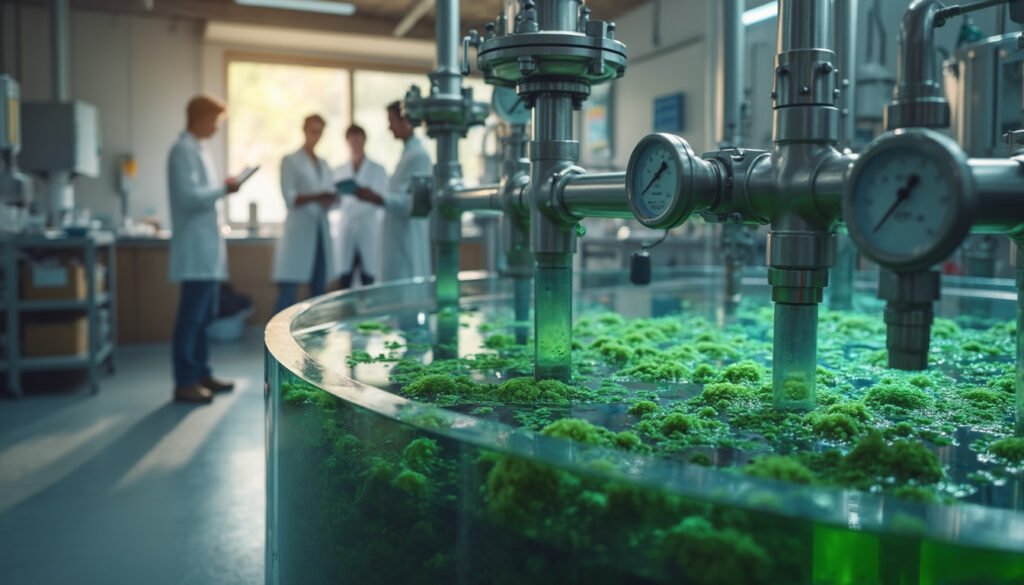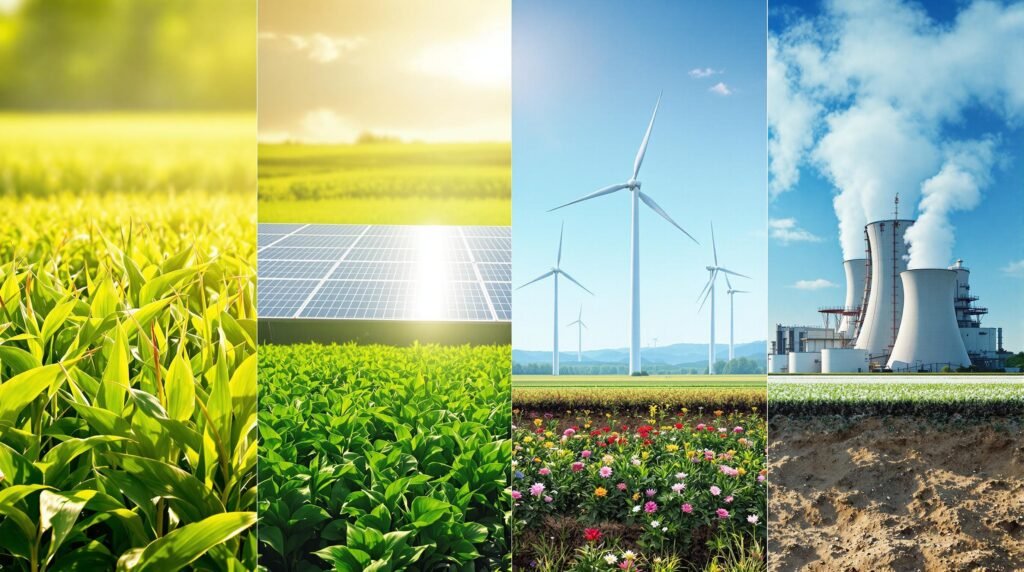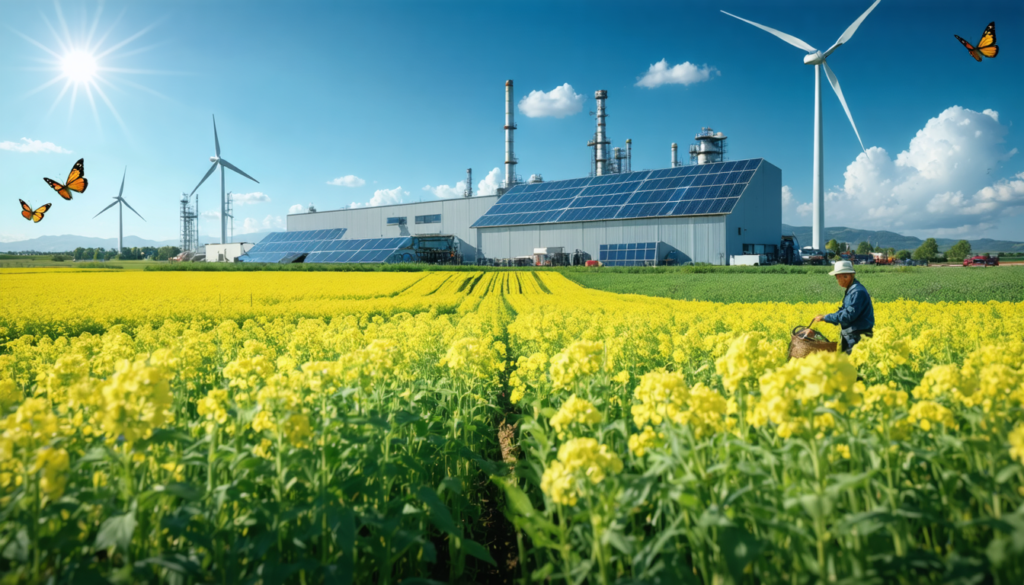As the global population continues to surge and with it, the relentless demand for energy, the world faces a grave challenge: finding sustainable energy sources that can effectively mitigate climate change. The escalating reliance on fossil fuels has not only resulted in environmental degradation but has also highlighted the need for innovative solutions. Microalgae emerge as a formidable ally in this battle, offering dual benefits as a renewable energy source and a natural carbon sink.
The repercussions of not addressing this energy dilemma are wide-ranging; economic instability, environmental deterioration, and increased greenhouse gas emissions stand out as significant concerns. Without advancing sustainable alternatives, the future may be bleak—pushing us towards a crisis of resource scarcity and environmental collapse.
Microalgae serve as a solution to these pressing challenges. With their unparalleled growth rates and capacity for converting carbon dioxide into oxygen, they present a pathway to sustainable biofuel production. Harnessing microalgae not only has the potential to meet energy needs but can also contribute to environmental restoration.
Understanding Microalgae: Nature’s Powerhouses
Microalgae are microscopic organisms, mostly found in freshwater and marine systems, and are known for their exceptional ability to grow rapidly and convert sunlight into energy through photosynthesis. This adaptation makes them viable candidates for biofuel production, as their lipid-rich tissues can be converted into biodiesel and other biofuels.
Unique Characteristics of Microalgae
- High Growth Rates: Some microalgae species can double their biomass in a matter of hours.
- Lipid Content: Many species of microalgae are rich in oils, which are crucial for biofuel production.
- Carbon Sequestration: Microalgae absorb significant amounts of CO2, thus playing a role in mitigating climate change.
- Utilization of Waste Streams: They can thrive in nutrient-rich wastewater, providing a sustainable cultivation method.
Global Potential of Microalgae Cultivation
| Microalgae Species | Growth Rate (g/L/day) | Lipid Content (%) |
|---|---|---|
| Chlorella vulgaris | 0.2-0.4 | 30-50 |
| Spirulina platensis | 0.3-0.6 | 10-15 |
| Acutodesmus obliquus | 0.4-0.7 | 20-40 |
Biofuel Production from Microalgae
The biochemical conversion of microalgae into biofuels involves several key processes, including cultivation, harvesting, lipid extraction, and conversion to biodiesel. Each step presents specific challenges and opportunities, impacting the overall efficiency and sustainability of the process.
1. Cultivation Techniques
Successful microalgae cultivation requires optimal conditions for growth, which can be achieved through various systems:
- Photobioreactors: Controlled environments that prevent contamination and optimize light exposure.
- Open Ponds: Cost-effective yet more susceptible to contamination and evaporation.
- Hybrid Systems: Combining open ponds with photobioreactors to leverage the benefits of both systems.
2. Harvesting Strategies
Post-cultivation, harvesting microalgae presents challenges due to their small size. Techniques employed include centrifugation, filtration, and flotation. Each method varies in cost and efficiency, impacting the overall economic viability of the biofuel production:
- Centrifugation: Effective but energy-intensive.
- Filtration: More sustainable but can be slower.
- Flotation: Rapid and effective, suitable for large-scale operations.
Environmental Benefits and Sustainability
The integrated approach of using microalgae for biofuel production offers substantial environmental benefits. Their role in carbon sequestration, coupled with wastewater treatment capabilities, highlights their potential as a holistic solution to several pressing global challenges.
Carbon Sequestration Potential
Microalgae can absorb carbon dioxide efficiently during photosynthesis. Studies suggest that cultivating microalgae can result in significant reductions in CO2 levels, making them vital for global greenhouse gas mitigation efforts. Their capacity for sequestering CO2 while producing oxygen contributes directly to environmental health:
- Efficient CO2 Absorption: Microalgae can absorb up to 2.5 times more CO2 than terrestrial plants.
- Restoration of Ecosystems: Implementing microalgae cultivation can aid in restoring ecosystems impacted by pollution.
Wastewater Treatment
Microalgae’s ability to thrive in nutrient-rich wastewater provides a dual solution for waste management and biofuel production:
- Reduction of Eutrophication: By absorbing excess nutrients, microalgae mitigate the harmful effects of runoff.
- Clean Energy Production: The biomass generated from wastewater can be used for biofuels, creating a circular economy.
Challenges and Future Directions
Despite the promising potential of microalgae, several challenges must be addressed to facilitate their widespread adoption as biofuel sources. Cost competitiveness against traditional hydrocarbons, scaling production processes, and increasing public awareness are paramount considerations.
Economic Viability
The challenge of reducing cultivation and processing costs remains significant. Strategies such as optimizing growth conditions and improving harvesting efficiency can enhance the economic feasibility of microalgae-based biofuels:
- Technological Innovations: Advancements in biotechnology can lead to better yields and lower production costs.
- Government Incentives: Policies encouraging renewable energy sources can make investments in microalgae more attractive.
Public Awareness and Acceptance
Educating the public and stakeholders about the benefits of microalgae is essential for fostering support and investment. Public perception can drive market demand, impacting the future of biofuels:
- Awareness Campaigns: Promote the environmental and economic benefits of microalgae.
- Collaborations: Engage various sectors, including academia, industry, and government, to pool resources and expertise.
As advances are made in technology and methodologies, microalgae stand poised to revolutionize the way we approach energy production. Businesses such as WeConnect.asia remain committed to identifying innovative solutions to promote sustainable energy practices in Southeast Asia.

Conclusion: A Sustainable Energy Future with Microalgae
The journey towards sustainable energy solutions is far from straightforward. However, the integration of microalgae into the energy mix signifies a step towards achieving global sustainability goals, diminished reliance on fossil fuels, and combating climate change. As further research enhances our understanding and application of microalgae, their role as a sustainable energy solution will undoubtedly grow, highlighting the urgency and importance of this endeavor.
Exploring the Future: Innovations in Microalgae Technology
Research and development initiatives continue to refine microalgae cultivation methods further, optimizing processes for better efficiency and sustainability. Innovations in genetic engineering and bioprocessing are at the forefront of facilitating this evolution.
Innovative Genetic Engineering
Employing genetic engineering to enhance the lipid content of microalgae species can drastically improve biofuel yield. Techniques such as CRISPR and synthetic biology show promise in pushing the boundaries of what these organisms can achieve.
Expanding Applications Beyond Energy
The versatility of microalgae extends beyond biofuels. They hold potential for various applications, including:
- Food Industry: High-protein microalgae are gaining traction as dietary supplements.
- Cosmetics: Antioxidant properties of microalgae extracted for beauty products.
- Pharmaceuticals: Bioactive compounds sourced from microalgae are being researched for health benefits.




